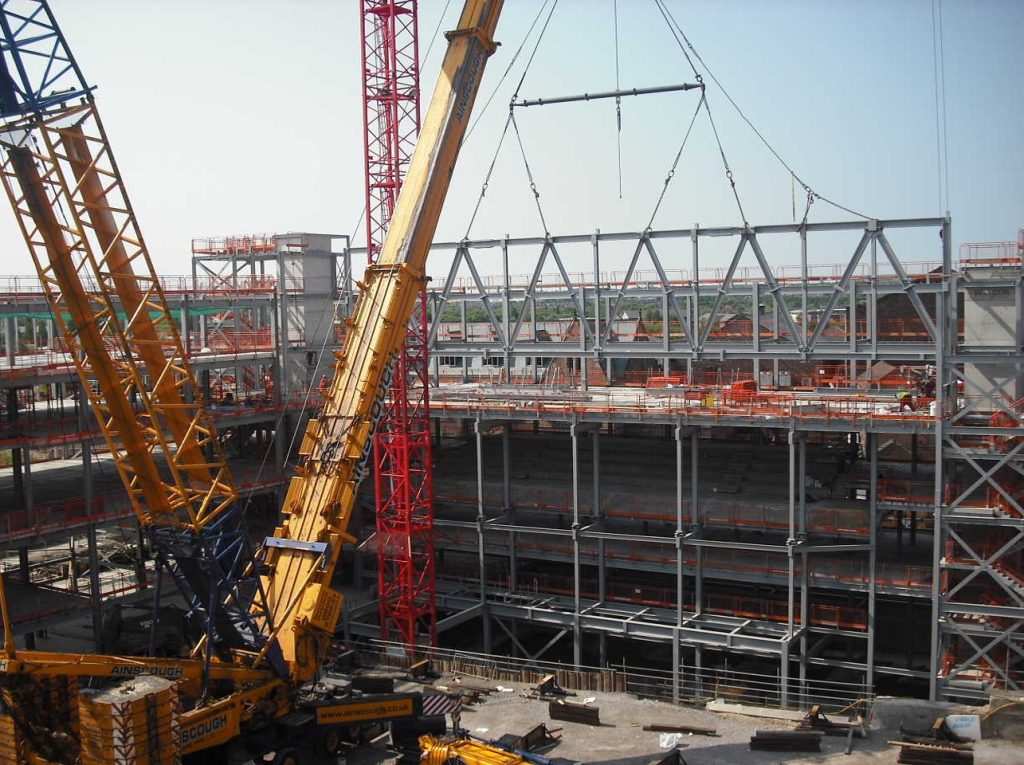Access is an important consideration when assessing designs from a buildability perspective. During the pre-construction phase, the elements of the design will be assessed in relation to these key factors:
- Providing & maintaining safe systems of work.
- Achieving the desired final quality.
- Meeting the programme requirements.
- De-risking perceived problems.
- Achieving optimum value for money.
Accessibility can determine the design and installation of a building
Early contractor involvement increases knowledge sharing, which contributes towards optimum buildability. Early involvement improves collaboration for overcoming any potential future problems related to things like space restrictions.
Space restrictions coupled with busy junctions create logistical challenges, especially in cities like London. The delivery management system (DMS) and traffic management plan (TMP) can often dictate the installation methodology. Site deliveries need to be carefully coordinated, especially where there is limited space, restricted access, or heavy traffic.
Scheduling deliveries to site
On large sites in city centres, there is often a delivery management system (DMS), where sub-contractors go onto a portal to book a delivery slot. Most sites have a strict traffic management plan (TMP), which also means that you need to stick to the given timeframe for offloading goods.
If a delivery is late, it can have a knock-on effect with other deliveries, which can be detrimental to the programme. For example, a subsequent delivery might not have any space to wait in the area. They could be forced to circle around a city like London until a timeslot becomes available. In extreme cases, the driver might need to park up if they have reached their maximum driving hours for the day.
Cranes offload directly from the vehicle when there isn’t much laydown area
With meticulous planning, steelwork can be delivered on a ‘just-in-time basis’ without the need for any lay down area. It needs to be loaded onto the truck in the correct sequence so that it can be offloaded and lifted directly into position from the vehicle. This is the most efficient installation process when there isn’t any lay down area. In city centre locations, this method avoids congestion around the loading bay, which would quite often be roadside.
When there is a laydown area
On the other hand, when there is a lay down area, a forklift or telehandler can be used to offload the steelwork with a few lifts before releasing the vehicle. Then the forklift driver would lay out the steelwork in the order of sequence, often referred to as ‘shake out.’
When a quick turnaround is needed
The logistical challenges become more complex when a quick turnaround is needed because there is more activity on site. For example, The New York Stadium in Rotherham required a quick turnaround as the structure needed to be ready for the following season. We used four mobile cranes to erect the New York Stadium on all four stands to speed up the erection process, with the volume of deliveries being aligned to the numerous workfaces.
Tower Cranes
On city centre jobs, where space is at a premium, tower cranes are often the lifting equipment of choice. Elland Steel Structures are often commissioned to fabricate and install the tower crane grillage as part of a contract. For example, Elland Steel provided the crane grillage to support the installation of The Rowe development in the busy Whitechapel area of London. For this project, we supplied and installed a double height extension, including the fabrication of over 800 tonnes of steel.
Loading was dispersed across the existing reinforced concrete frame as structural steel was lifted and installed into place, adding a new six-storey steel structure to the 1960s building. The method supported overall buildability of the ambitious project, making a challenging development physically possible and economically viable.
Though the focus of these temporary works is always safety, getting them right will deliver many benefits – from efficient programme timings and cost-effective delivery to achieving the most ambitious of designs.
Subscribe to the Elland Steel newsletter for more news and insights.

